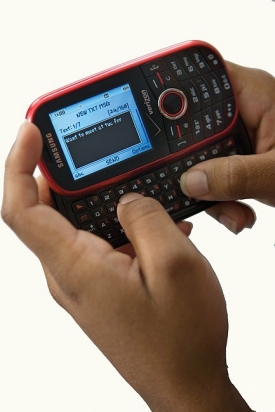Texting: Is it bad for your health?
by Amanda Harper
In a mobile communications era where we sometimes "talk" more with our fingers than our voices, a UC expert says our thumbs could pay the price.
The typical U.S. mobile subscriber sends and receives more text messages than telephone calls, according to recent trend reports published by the Nielsen Company. U.S. teens between the ages of 13 to 17 are the most intense users of texting, sending and receiving an average of 1,742 messages per user per month.
"The posture we assume while texting and e-mailing from mobile devices — using our thumbs to type, crunched over a tiny keyboard — is unnatural. It presents problems when we do it constantly without giving our body enough breaks," says Kermit Davis, an associate professor of environmental health in the College of Medicine and an expert in ergonomics, which is the science of people-machine relationships.
Few muscles come into play during texting, but Davis says the repeated use can still lead to problems. He recommends all regular users of mobile technology — regardless of age — take these basic steps to avoid muscle and forearm pain:
Reduce keystrokes. More keystrokes equals more strain on your hands, particularly the thumbs, so keep messages brief and use word-recognition tools when possible.
Take regular breaks. Doing any repetitive task for long periods of time without a break to let your body recover is a bad idea.
Orient your hands into a neutral posture. The wrist should be relatively straight. Avoid twisting your wrists into odd angles, which leads to chronic muscle inflammation and pain.
Choose a wider keyboard on your mobile device to give you more motion flexibility.
Use alternate fingers. Although it may seem awkward at first, Davis recommends alternating between fingers to give the thumbs a break.

 Issue Archive
Issue Archive
